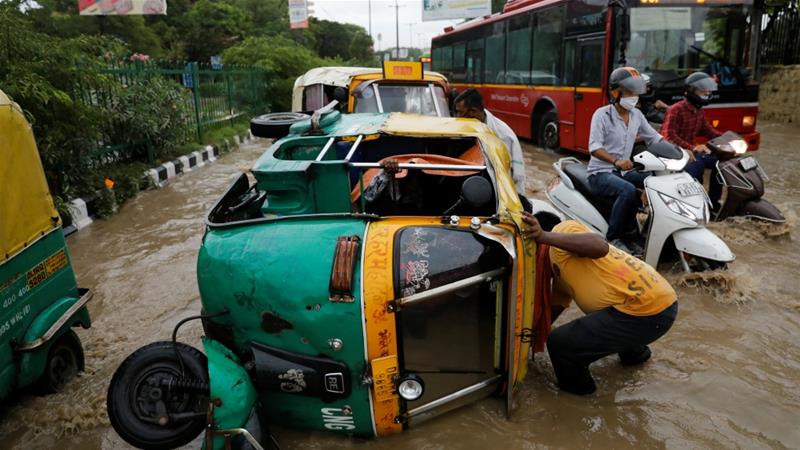
Heavy moonsoon rains have flooded parts of India's capital New Delhi and its suburbs, throwing life out of control for millions of people, as the death toll from South Asia 's annual deluge increased to almost 1,300 people.
In the Gurgaon suburb of New Delhi, called the Millennium City, roads, underground passes and residential areas were flooded on Wednesday causing power cuts in several regions. For some areas, rafts were put in place to evacuate people.
The moonsoon is vital to the densely populated region, revitalizing soil and waterways in the midst of summers scorching. Yet it also causes death and devastation which are common.
Watch video belowIn New Delhi, commuters battled through knee-deep waters and cars and buses were submerged as torrential rains added to traffic woes in the city of 20 million.
At a museum in Jaipur in the mostly desert state of Rajasthan, staff told AFP how they were forced to smash open a glass display case containing a 2,300-year-old Egyptian mummy in order to save it from rainwater flooding the ground floor.
"The workers broke the glass of the box and took the mummy out" last Friday after water levels started to rise, Albert Hall Museum superintendent Rakesh Cholak said.
In terms of duration, it was the second-worst flood in the country's history
"The case of the coffin got a little wet but we've put it out to dry too."
The torrid conditions in recent days also hit India's northern and eastern states.
Across India, 847 people have died this season, the home ministry said.
Watch video belowIn the southwestern state of Kerala, the death toll from a single landslide rose to 61 on Wednesday, with nine people still missing, an official said.
In India's poorest state, Bihar, eight million people have been hit by the floods, with thousands of displaced people sleeping on embankments and highways amid a shortage of relief camps.
The rains this year also came in the midst of the economic destruction caused by the coronavirus pandemic, with crop failure across flood-affected areas another blow to farmers and rural communities. In Bangladesh, 226 people have died so far after torrential rain caused rivers to burst their banks and inundate villages with 40 per cent of the country submerged.
"It was the second worst flood in the country's history in terms of duration," said Arifuzzaman Bhuyan, the head of Bangladesh's Flood Forecasting and Warning Centre.
More than six million people have had their homes damaged by the floods, and tens of thousands of villagers remain in shelters, an official from Bangladesh's disaster management ministry told AFP.






